In Photos: The Clovis Culture & Stone Tools
native american 1
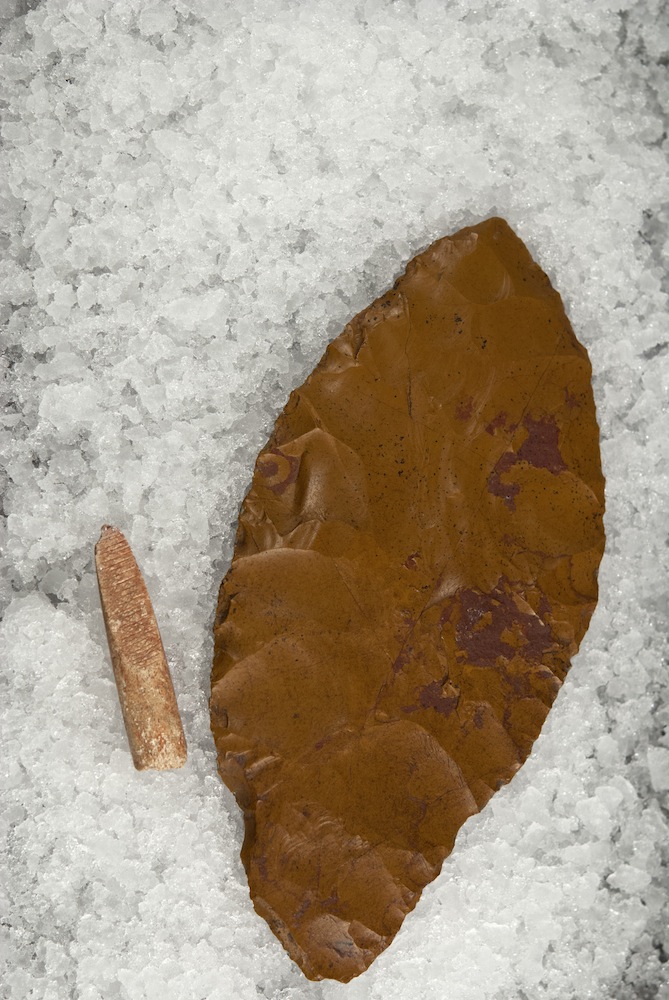
A large (approx. 255mm x 122mm) tabular core/ late-interval biface made of brown chert along with the beveled end of an osseous rod.
native american 2
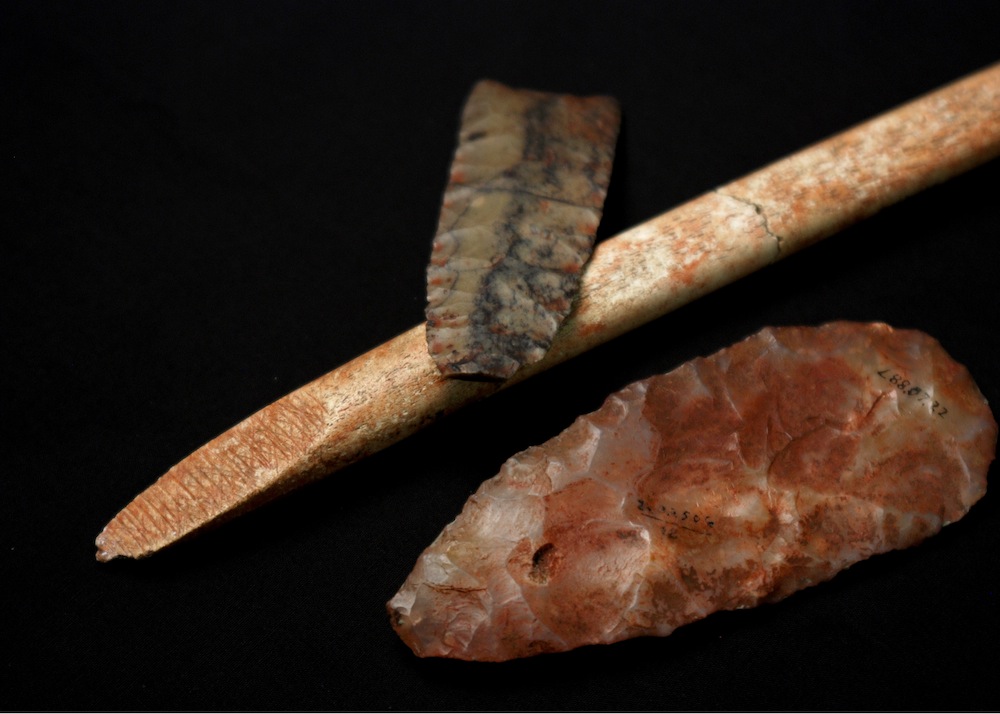
A nearly complete projectile point of dendritic chert, a mid-interval biface of translucent quartz, displaying relatively heavy red ochre residue and an "end-beveled" osseous rod, also exhibiting red ochre residue. These artifacts are technologically consistent with artifacts of the Clovis complex.
native american 3
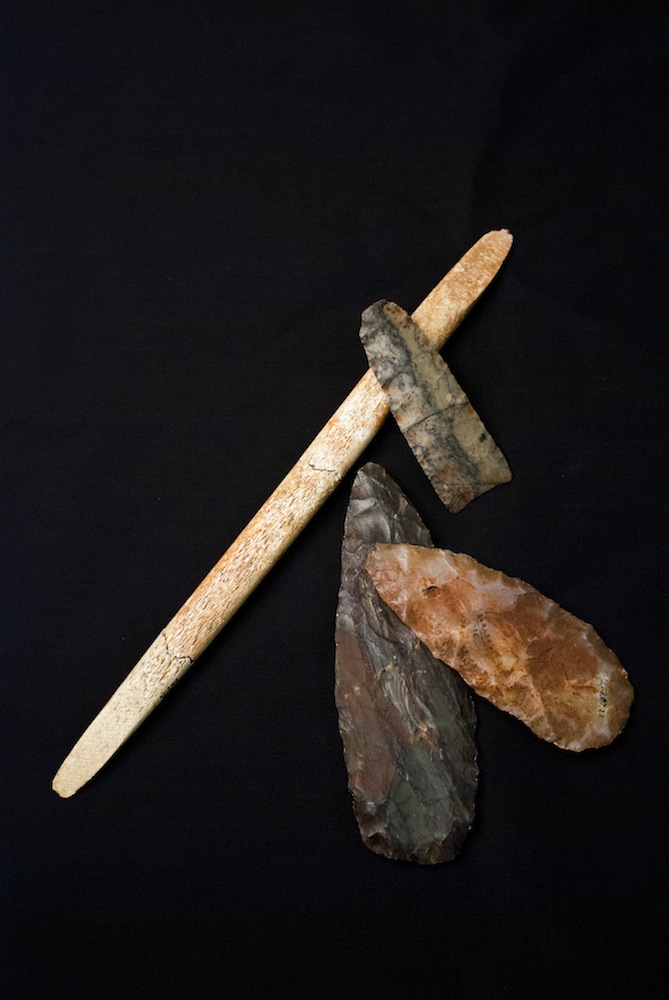
A nearly complete projectile point of dendritic chert, a mid-interval biface of translucent cryptocrystalline quartz, a mid to late-interval biface of dendritic chert, and a "dual,end-beveled" osseous rod, all of which exhibit various amounts of red ochre residue.
native american 4
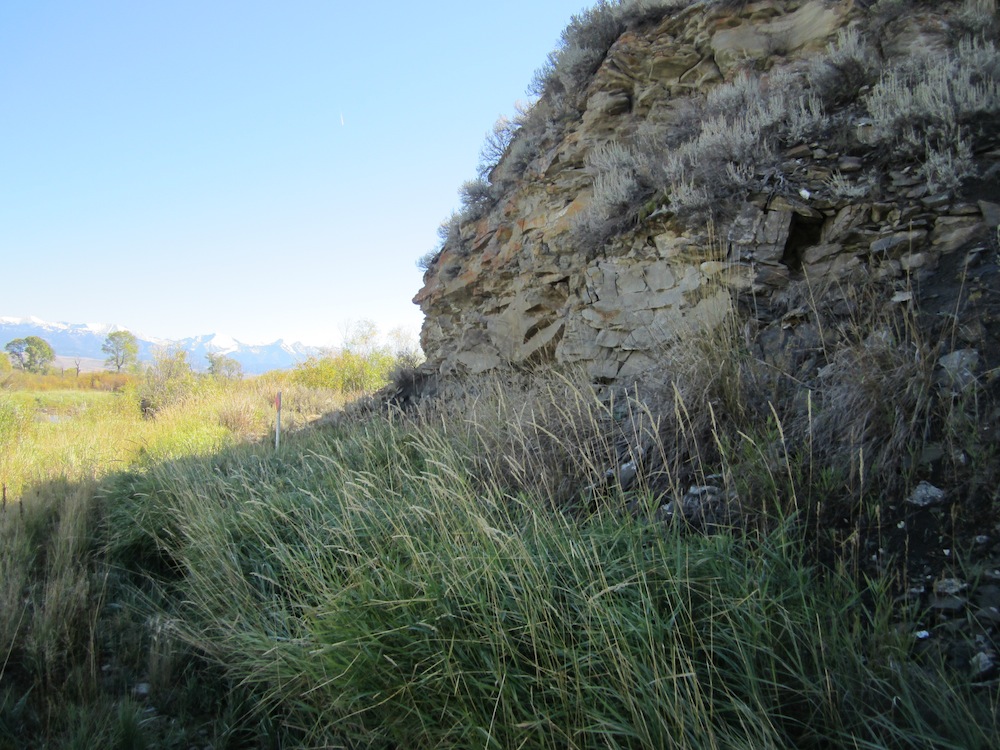
The genome sequence of a male infant who lived 12,600 years ago from a Clovis burial site (shown here with poles) in Wilsall, Mont., suggests many contemporary Native Americans are direct descendants of the people who made and used Clovis tools.
First American Settlers Not Who We Thought
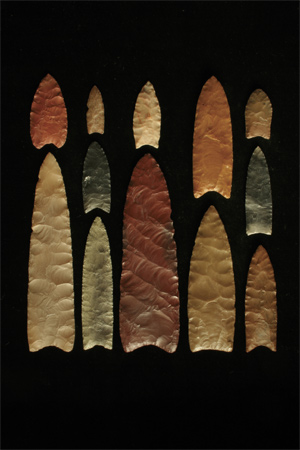
Clovis points from various sites in North America.
Western Stemmed Projectile Points from Paisley Caves
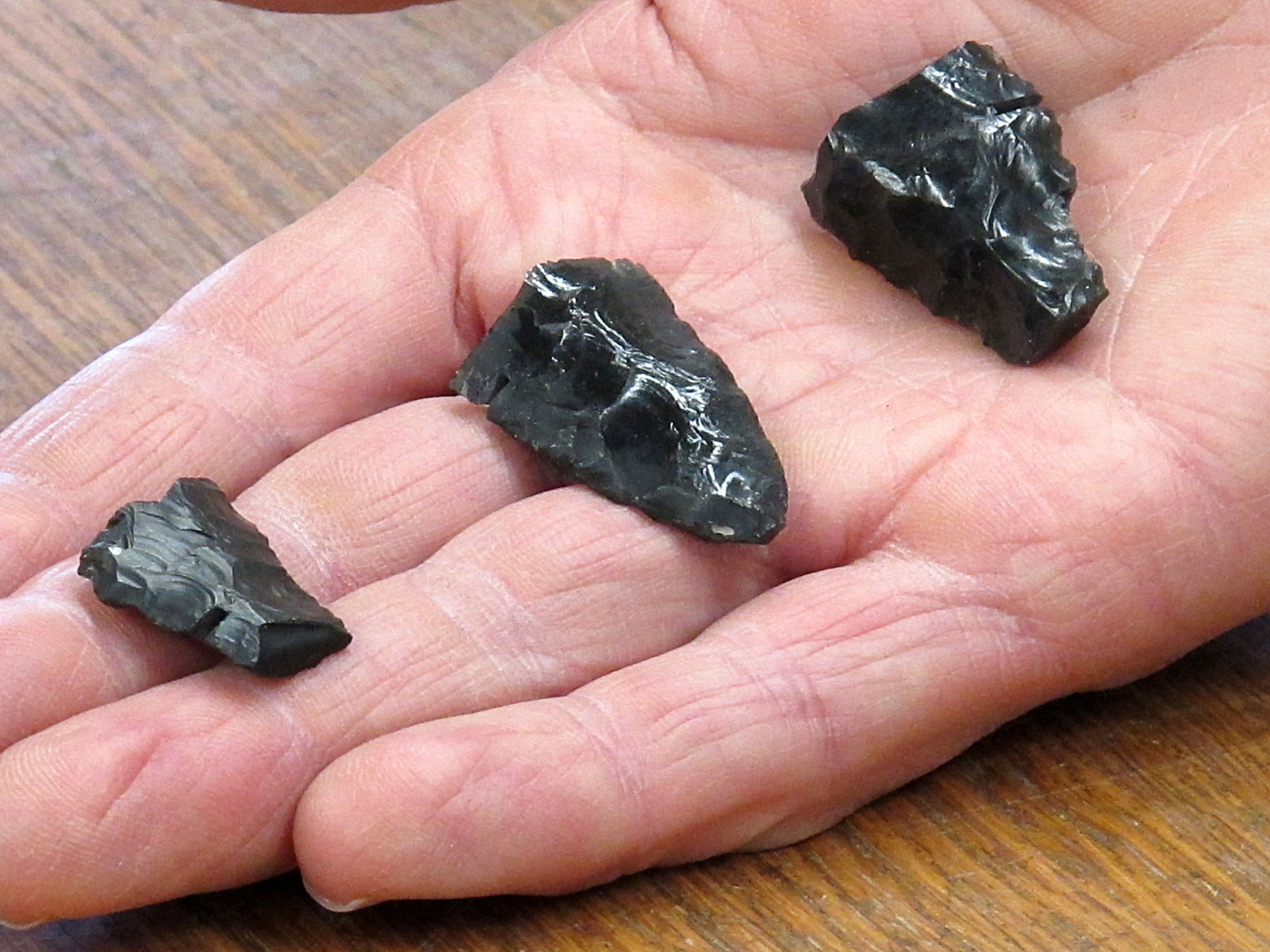
Displayed in the hand of University of Oregon archaeologist Dennis Jenkins are three bases for Western Stemmed projectiles from the Paisley Caves in Oregon. The bases date to some 13,000 years ago.
Sign up for the Live Science daily newsletter now
Get the world’s most fascinating discoveries delivered straight to your inbox.










